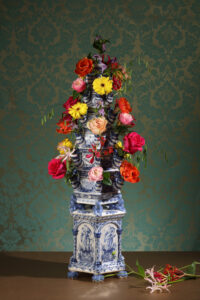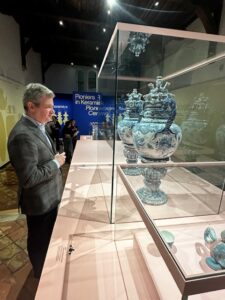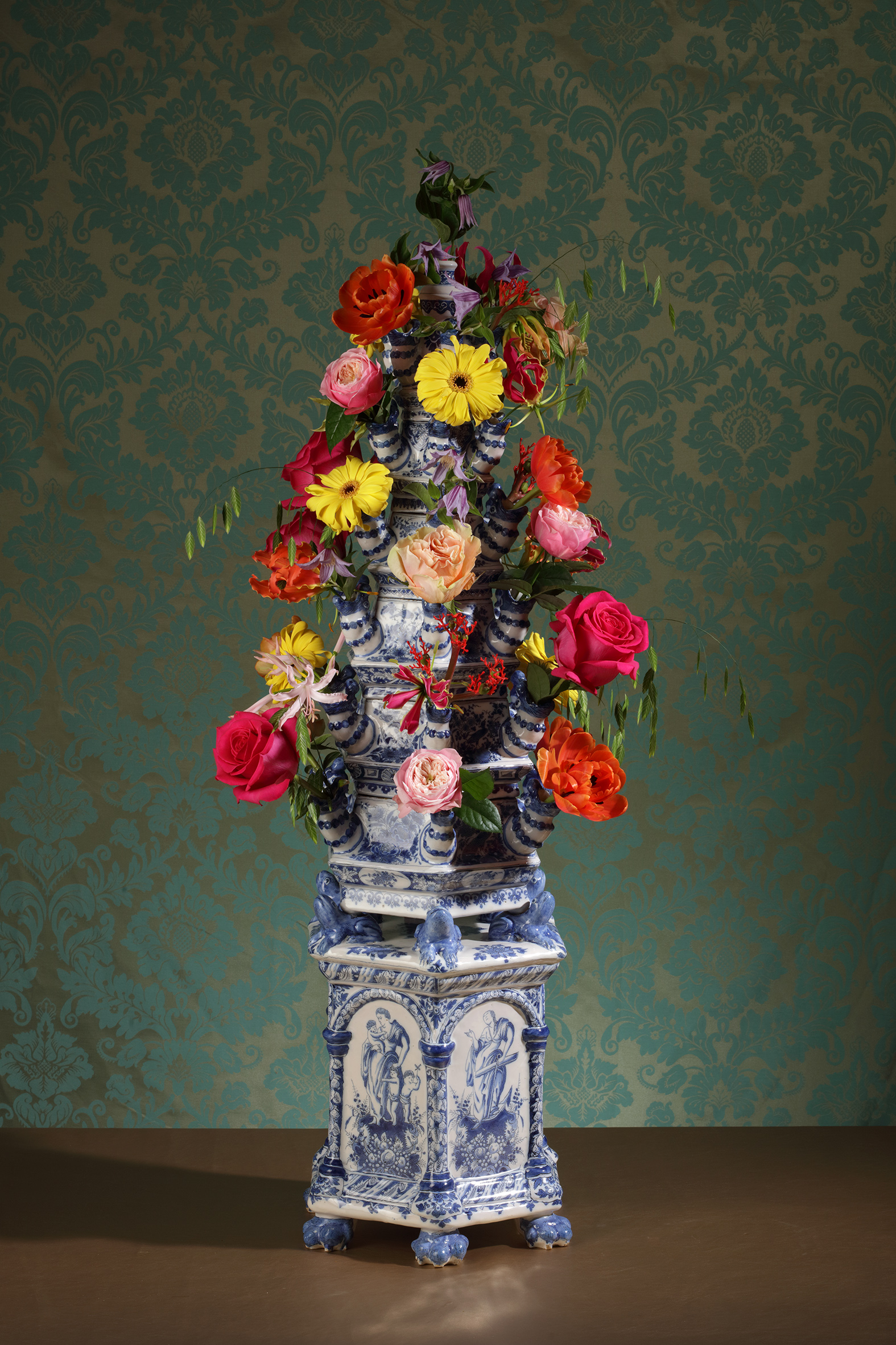
The Cleveland Museum of Art Acquires Masterpiece
We are delighted to announce that a magnificent blue and white pyramidal flower vase, attributed to Adrianus Kocx of the renowned De Grieksche A (The Greek A) factory, has been acquired by The Cleveland Museum of Art. This exceptional piece, dating circa 1690, was purchased at TEFAF Maastricht 2024 from Aronson Antiquairs, Amsterdam.
The vase, marked with “AK” on the top of the plinth, exemplifies the height of Dutch Delftware craftsmanship during the reign of William III and Mary II. Standing at an impressive 95 cm (37.4 in.) tall, this hexagonal masterpiece is supported by paw feet and features allegorical figures of Faith, Hope, and Love, as well as intricate peacock motifs and open-mouthed fantasy animal heads forming spouts.
We were thrilled to collaborate with the museum curator and the complete team at The Cleveland Museum of Art. Their dedication and expertise greatly contributed to the acquisition process and the exploration of the vase’s provenance. The piece was part of the collection of Sir Cecil W.H. Beaton (1904–1980) at Reddish House, Wiltshire, England, from before 1957 and remained there until 1980.
This flower pyramid, probably originally produced for the English market, reflects the international appeal and artistic ambition of Dutch ceramicists of the late 17th century. It represents not only a significant addition to The Cleveland Museum of Art’s decorative arts collection but also a testament to the historical and cultural exchange between the Netherlands and England during this period.
We are proud to have facilitated the acquisition of this important work and to continue our tradition of offering the finest Delftware to prestigious institutions worldwide.

The full description and further information about this vase may be found here.
Throughout the decades and over generations the Aronson family members have been selling masterpieces in Delftware. In this photo Robert D. Aronson can be seen looking at a pair of monumental vases, Delft, also circa 1690, sold by his grandfather Abraham (1916-1990) to the municipality of Delft in 1967 and now through Sept. 8, 2024 at the exhibition ’Pioneering Ceramics’ at Museum Prinsenhof, Delft.

